Stable isotopes
Type of resources
Available actions
Topics
Keywords
Contact for the resource
Provided by
Years
Formats
Representation types
Update frequencies
Scale
-

This dataset contains the raw and processed data from carbon and oxygen stable isotope analysis of calcite in samples from 2 different field locations - Warton and Glengarnock. The data was collected in 2022-2023. The data was collected for the purpose of identifying whether the carbonate minerals in the collected samples contained atmospheric carbon dioxide. The data was collected by John MacDonald and Charlotte Slaymark (University of Glasgow) who retain the original data.
-
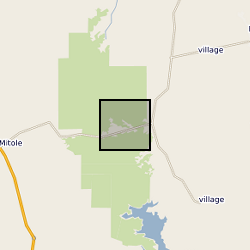
Data from Tanzania Drilling Project Core Site 14 B. Data spans the Paleocene Eocene Thermal Maximum ~56 million years ago. Data includes: bulk sediment geochemistry, BIT index and GDGT data, n-alkane d13C data, single specimen planktonic foraminifera stable isotope data and planktonic foraminifera count data. Geographic location 9°16'59.89"S, 39°30'45.04"E
-

The dataset includes oxygen and carbon stable isotopes measured on multispecies planktonic foraminifera from 15 million years ago to the present, as well as trace elements ratio and abundance counts. For the code availability and instructions to run the cGENIE version and experiments see Boscolo-Galazzo, Crichton et al. (2021).
-

Twenty-six 10 cm3 samples from DSDP (Deep Sea Drilling Project) Site 94, Core 15, sections 3 and 4 were examined at 10 cm-intervals (417.84-415.01 meters below seafloor [mbsf]). The sedimentary material was soaked in distilled water and washed under running water through a 63 µm sieve and oven dried at <40 degrees C. Samples were then re-washed and dried using the same method. Foraminifera are abundant and recystallised. Calcite precipitation is observed on microspherules in some samples. For each sample, a total of three foraminiferal species that correspond to different ecological habitats were selected for isotope analysis. Specimens of Pseudohastigerina micra and P. naguewichiensis were selected from the 125-250 µm size fraction and Turborotalia cocoaensis, and Cibicidoides eocaenus were selected from the >250 µm size fraction. Specimens that had infilling or showed heavy calcification were avoided. All foraminifera were ultrasonicated for 2 seconds prior to isotopic analyses. To track the number of impact microspherules across the sampled interval, we performed our own microspherules count from the >125 micron size fraction. Microtektites have not been distinguished from microkrystites in this study and thus all recovered spherules should be considered under the broader category of microspherules (both microtektites and crystalline-bearing microkrystites). We recovered a total of 4999 microspherules from the 26 samples. Microspherules are usually <1 mm in size, and occur primarily spherical, although ellipsoid, teardrop and dumbbell forms and fragments have also been found. In most samples the microspherules count is low <50 microspherules. We found a high abundance (>50 microspherules/10 cm3) between samples 15R/3/135-137 cm and 15R/3/89-91 cm (416.36 to 415.90 mbsf). Our peak concentration of microspherules at 15R/3/109-111 cm (416.10 mbsf), where 3395 microspherules were recovered, coincides with the younger of the two late Eocene impacts i.e., the North America microtektite horizon associated with the Chesapeake Bay impact.
-
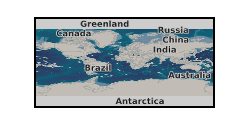
IDA272269 Methane and CO2 gas concentrations and stable isotope analyses of cutting samples from GGA05 and GGA08 boreholes of the Glasgow UKGEOS facility. Cutting samples were collected approximately every 3m depth in gas tight isojars by the BGS. Geochemical gas analyses was carried out at the Scottish Universities Environmental Research Centre (SUERC) and consisted of bulk concentration analysis using gas chromatography; followed by δ13CCH4, δ13CCO2, and δD stable isotope analyses on a methane combustion line (full methods attached). This data was collected to investigate the variability of gas fingerprints with depth within the Glasgow coal mine workings, and unmined Carboniferous coal measures. Samples and data are derived from the UK Geoenergy Observatories Programme funded by the UKRI Natural Environment Research Council and delivered by the British Geological Survey.
-
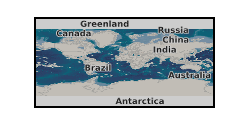
Groundwater and gas samples collected from sites in the Vale of Pickering and analysed for major gas concentrations, methane stable isotopes, and noble gas compositions.
-
Noble gas and clumped methane data for samples from Anyue gas field, China (NERC Grant NE/T004452/1)
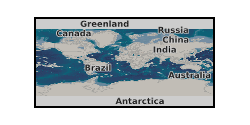
This dataset contains 6 tables covering all analytical data for samples collected from the Anyue gas field, central Sichuan Basin, China. Table 1 includes major gas species and stable carbon and hydrogen isotopes. Table 2 includes results for methane clumped isotopes and calculated methane formation temperatures of gas samples. Table 3 includes noble gas concentrations. Table 4 includes noble gas isotopic ratios. Table 5 includes parameters used in methane emission model and calculating total volume of methane emission. Table 6 includes gas composition and stable carbon and hydrogen isotope characteristics of major gases produced in the pyrolysis experiments (thermally equilibrated methane between 400~500 in theory) and working reference gas, and their methane clumped isotope values.
-
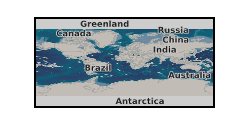
This dataset contains the nitrogen, oxygen, and lithophile element geochemistry of whole rock, and distribution coefficients, and stable isotope fractionation factors for biotite, orthoclase, and plagioclase mineral separates from the Loch Doon Zoned Pluton, Scotland. The samples were collected from the northern limb of the Loch Doon pluton and are petrologically classified as are granodiorites and granites which show geochemical evidence for being a cogenetic zoned pluton. The data were collected over a time period of 2019-2022. These data were collected to investigate elemental partitioning and stable isotope fractionation of nitrogen between biotite, plagioclase, and orthoclase relative to each other and to the system (whole rock) during magmatic differentiation. This project was curiosity-driven science, and the anticipated interest groups are assumed to be the wider research community via scholarship and analytical protocols. These data were collected by an international team of scientists as part of Dr Toby Boocock’s PhD project. The full list of contributors are shown below: Boocock, TJ., Stüeken, ES., König, R., Mikhail, S, The University of St Andrews, UK (performed analysis, acquired samples, interpreted data) Bybee, GM, The University of the Witwatersrand, South Africa (performed analysis) Boyce, AJ, Scottish Universities Environmental Research Centre, UK (performed analysis) Prytulak, J, Durham University, UK (interpreted data) Buisman, I, University of Cambridge, UK (performed analysis)
-
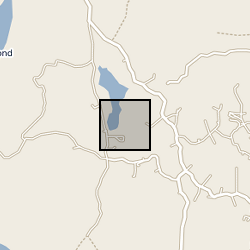
Oxygen and carbon isotope measurements from multiple-shell samples of the ostracod Cypretta brevisapta, and loss-on-ignition determinations, from Core WAGP taken from Wallywash Great Pond, Jamaica. A chronology for the core is provided by radiocarbon dates and short-lived radio-isotopes. The data provide a proxy for changing hydroclimate for the period 2000 – 200 CE.
-
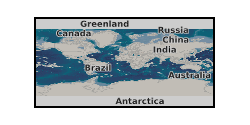
This dataset comprises raw carbon, oxygen and hydrogen stable isotope data on water (precipitation and terrestrial) and plant cellulose from Empodisma-dominated peatlands throughout New Zealand. This data has been published in two open access papers: Amesbury, M. J., Charman, D. J., Newnham, R. M., Loader, N. J., Goodrich, J. P., Royles, J., Campbell, D. I., Roland, T. P. and Gallego-Sala, A. V. 2015. Carbon stable isotopes as a palaeoclimate proxy in vascular plant dominated peatlands. Geochimica et Cosmochimica Acta 164, 161-174. Amesbury, M. J., Charman, D. J., Newnham, R. M., Loader, N. J., Goodrich, J. P., Royles, J., Campbell, D. I., Keller, E. D., Baisden, W. T., Roland, T. P. and Gallego-Sala, A. V. 2015. Can oxygen stable isotopes be used to track precipitation moisture source in vascular plant dominated peatlands? Earth and Planetary Science Letters 430, 149-159.
 NERC Data Catalogue Service
NERC Data Catalogue Service